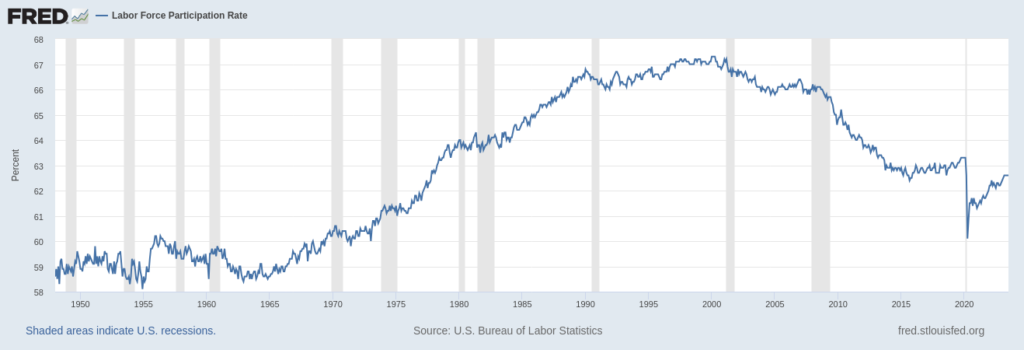The BEA released the Fed’s preferred measure of inflation and it’s not good. From the BEA:
Personal income increased $45.0 billion (0.2 percent at a monthly rate) in July, according to estimates released today by the Bureau of Economic Analysis (table 3 and table 5). Disposable personal income (DPI), personal income less personal current taxes, increased $7.3 billion (less than 0.1 percent) and personal consumption expenditures (PCE) increased $144.6 billion (0.8 percent).
The PCE price index increased 0.2 percent. Excluding food and energy, the PCE price index increased 0.2 percent (table 9). Real DPI decreased 0.2 percent in July and real PCE increased 0.6 percent; goods increased 0.9 percent and services increased 0.4 percent (tables 5 and 7).
Source: BEA.gov
So after 525% increase in the central bank rate, the Fed hasn’t made much progress in containing certain parts of inflation. If you’re wondering what might be happening consider that each day 12,000 baby boomers retire from the labor force. These are doctors, lawyers, engineer, electricians, plumbers, carpenters, police officers and on and on. At the same time, we don’t have enough young people joining the labor force because they don’t exist.
The St. Louis Feds labor participation graph illustrates the issue. From 1970 thru 2000 the labor force continuously grew (baby boomers) and from 2000 on it dropped. COVID created the anomaly on the chart but the trend was definitely down.

So what’s driving inflation if baby boomers are retiring?

As the labor force grew in the 1970s it mean more people were earning money and buying goods and services. This was the period in time when baby boomers were reaching family formation age, they married, had kids and bought house and stuff to fill those houses. Today, we have millenials and gen z coming into family formation age looking for houses and the same goods and services to fill up their house with stuff. Unfortunately for millenials and gen z, they are competing with retiring boomers that may want a second retirement home or want rental income properties or simply want to downsize.
What’s worse is that retired baby boomers leave the workforce and collect social security and get subsidized healthcare from medicare so they push demand higher while not contributing to the labor force.
We expect inflation to be high, the Fed can raise central bank rates to 18% but that won’t fix the labor issue so we’re not sure what happens here to contain inflation. We fully expect demand for energy to grow as well as services especially in healthcare so we’re focusing on profit opportunities in these industries. To learn what we find out, stay tuned, stay profitable and stay solvent…